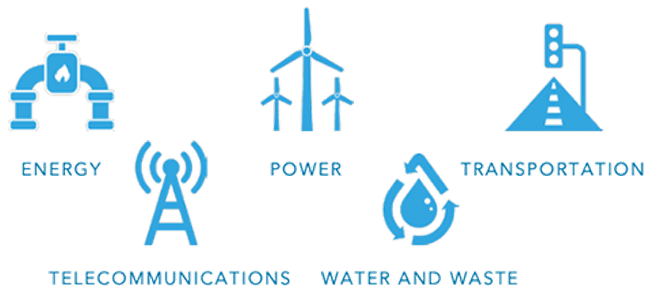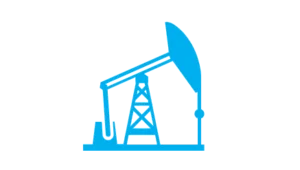Real assets are tangible, physical assets whose value is derived from their actual use such as apartments, bridges, power plants, and farms. They play a role in our daily lives and serve as key inputs to the financial well-being and growth of communities and countries around the world.
DIVERSIFIED SOURCES OF RETURN AND INCOME
Real asset investments are designed to offer diversified sources of return and/or income and hedge against inflation. When selecting underlying investments, real asset fund managers are typically focused on:
1. Identifying opportunities for growth and/or consistent revenue/income;
2. Maximizing the potential of the investment, which may include working with operators and management teams to implement changes that can require significant capital expenditures; and
3. Prioritizing downside protection through targeting investments with attractive pricing relative to replacement cost and the prudent use of leverage.
PRIMARY INVESTMENT CATEGORIES
Real asset fund managers typically specialize in a specific type of asset. They include, but are not limited to:
REAL ESTATE
Real estate is physical property such as land or buildings that is leased to tenants in order to generate regular cash flow. Examples include apartments, office spaces, warehouses, retail stores, and malls. Commercial real estate is the largest sub-category of real assets and consists of four main property types: multifamily/residential, office, industrial/warehouse, and retail.
Multifamily/Residential
![]()
Housing units: condominiums, apartment buildings, complexes
Office
![]()
Corporate/ Office space: large buildings, high-rises, corporate campuses
Industrial/Warehouse
![]()
Large buildings/structures: heavy manufacturing, light assembly, warehouses, research & development, or flex industrial (industrial + office)
Retail
![]()
Properties focused on the sale of goods and services: cafés, restaurants, banks, gyms, single or multi-tenanted (e.g., a shopping mall)
INFRASTRUCTURE
Infrastructure refers to the permanent facilities and installations needed for the functioning of a society or large- scale economic commerce. Examples of infrastructure include bridges, toll roads, airports, power plants, and cell towers as well as community structures such as hospitals, schools, and parks. We can broadly categorize infrastructure into economic and social infrastructure.
Economic Infrastructure
 User pays directly for the services provided. Examples include energy, power, transportation, telecommunications, water, and waste services.
User pays directly for the services provided. Examples include energy, power, transportation, telecommunications, water, and waste services.
Social Infrastructure
 Governments pay directly for the services; users pay indirectly via taxes. Examples include schools, hospitals, prisons, parks, monuments, and public transportation.
Governments pay directly for the services; users pay indirectly via taxes. Examples include schools, hospitals, prisons, parks, monuments, and public transportation.
NATURAL RESOURCES
Natural resources are materials from the earth that support our daily lives and needs. Examples of natural resources include oil and gas investments, farmland, woodland, metals, and minerals.
Energy
 Oil & Gas:
Oil & Gas:
Exploration & Production
Agriculture
 Farmland:
Farmland:
Crops
Timber
 Woodlands/trees:
Woodlands/trees:
Extraction & Production
Metals & Mining
 Elements: Gold/Silver/Copper
Elements: Gold/Silver/Copper
Minerals: Coal/Salt
REAL ESTATE AND INFRASTRUCTURE: STAGES OF DEVELOPMENT
When investing specifically in real estate or infrastructure funds, there are four types of investment strategies that a fund manager can deploy. These strategies are differentiated by the asset’s current stage of development and the level of work needed to get it to a position where it is generating consistent income or returns.
BENEFITS
![]() Real assets can offer the potential for current income and consistent long-term cash-flows.
Real assets can offer the potential for current income and consistent long-term cash-flows.
![]() Real assets can generate enhanced returns and potentially hedge against inflation.
Real assets can generate enhanced returns and potentially hedge against inflation.
![]() Historically, real assets have demonstrated low levels of correlation and have therefore offered relative stability in volatile market conditions to the public equity markets.1
Historically, real assets have demonstrated low levels of correlation and have therefore offered relative stability in volatile market conditions to the public equity markets.1
![]() Real assets are versatile tools for building diversified portfolios.
Real assets are versatile tools for building diversified portfolios.
KEY RISK CONSIDERATIONS
Real assets span multiple sub-categories and asset types. Key risk considerations may include, but are not limited to, the following:
Underlying Asset Risk: Due to the physical nature of real assets, investors may be exposed to a wider range of potential risks including macroeconomic, political, regulatory, environmental, or commodity risk. Investors should understand the risks associated with the underlying investments in a real asset fund before investing.
Liquidity: Real asset investments have a longer hold period than many other private market assets. Most real asset funds are structured with terms of at least 8 to 10 years, and it is common to see infrastructure funds with terms of up to 15 years.
Interest Rate Risk: Real assets can be sensitive to interest rates. An increase in interest rates may erode the relative attractiveness of the income generated and may lower the value of the underlying asset.
Credit Risk: Real asset investments may involve leasing to, or contracting with, non-investment grade counterparties, and there may be a greater risk of nonpayment of scheduled payments or default, which may affect the return to investors.
Transparency: Real asset funds may not offer the same level of transparency as traditional investments, which are required to provide frequent and full disclosures.
Fees: Real asset fund managers charge an annual management fee, typically 1–2% of assets under management. Fund managers also collect performance fees, known as carried interest, which traditionally represent 10–20% of any value appreciation or aggregated profits generated by the fund.
Leverage: Real asset funds may use some form of leverage, which offers the potential for higher returns, but also increases the downside risk.
Please contact your financial professional or a fund manager to learn more.
1. Source: Hamilton Lane. 1999 – Q3 2020.
IMPORTANT INFORMATION
The material herein has been provided to you for informational purposes only by Institutional Capital Network, Inc. (“iCapital Network”) or one of its affiliates (iCapital Network together with its affiliates, “iCapital”). This material is the property of iCapital and may not be shared without the written permission of iCapital. No part of this material may be reproduced in any form, or referred to in any other publication, without express written permission of iCapital.
This material is provided for informational purposes only and is not intended as, and may not be relied on in any manner as, legal, tax or investment advice, a recommendation, or as an offer or solicitation to buy or sell any security, financial product or instrument, or otherwise to participate in any particular trading strategy. This material does not intend to address the financial objectives, situation, or specific needs of any individual investor. You should consult your personal accounting, tax and legal advisors to understand the implications of any investment specific to your personal financial situation.
ALTERNATIVE INVESTMENTS ARE CONSIDERED COMPLEX PRODUCTS AND MAY NOT BE SUITABLE FOR ALL INVESTORS. Prospective investors should be aware that an investment in an alternative investment is speculative and involves a high degree of risk. Alternative Investments often engage in leveraging and other speculative investment practices that may increase the risk of investment loss; can be highly illiquid; may not be required to provide periodic pricing or valuation information to investors; may involve complex tax structures and delays in distributing important tax information; are not subject to the same regulatory requirements as mutual funds; and often charge high fees. There is no guarantee that an alternative investment will implement its investment strategy and/or achieve its objectives, generate profits, or avoid loss. An investment should only be considered by sophisticated investors who can afford to lose all or a substantial amount of their investment.
iCapital Markets LLC operates a platform that makes available financial products to financial professionals. In operating this platform, iCapital Markets LLC generally earns revenue based on the volume of transactions that take place in these products and would benefit by an increase in sales for these products.
The information contained herein is an opinion only, as of the date indicated, and should not be relied upon as the only important information available. Any prediction, projection or forecast on the economy, stock market, bond market or the economic trends of the markets is not necessarily indicative of the future or likely performance. The information contained herein is subject to change, incomplete, and may include information and/or data obtained from third party sources that iCapital believes, but does not guarantee, to be accurate. iCapital considers this third-party data reliable, but does not represent that it is accurate, complete and/or up to date, and it should not be relied on as such. iCapital makes no representation as to the accuracy or completeness of this material and accepts no liability for losses arising from the use of the material presented. No representation or warranty is made by iCapital as to the reasonableness or completeness of such forward-looking statements or to any other financial information contained herein.
Securities products and services are offered by iCapital Markets, an SEC-registered broker-dealer, member FINRA and SIPC, and an affiliate of iCapital, Inc. and Institutional Capital Network, Inc. These registrations and memberships in no way imply that the SEC, FINRA, or SIPC have endorsed any of the entities, products, or services discussed herein. Annuities and insurance services are provided by iCapital Annuities and Insurance Services LLC, an affiliate of iCapital, Inc. “iCapital” and “iCapital Network” are registered trademarks of Institutional Capital Network, Inc. Additional information is available upon request.
©2024 Institutional Capital Network, Inc. All Rights Reserved. | 2024.01












